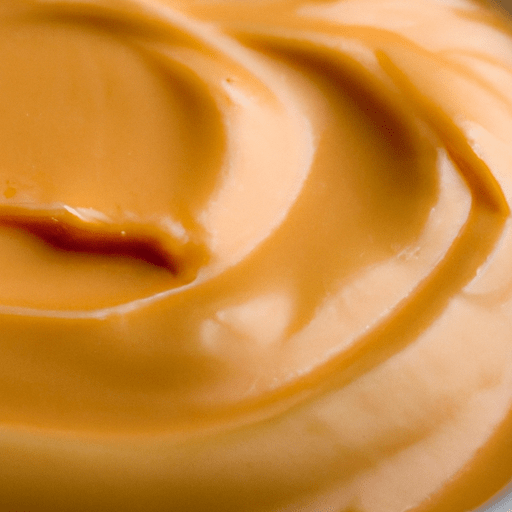Exploring the Rich Delights of Butterscotch Pudding
If you have a sweet tooth and a flair for indulgence, butterscotch pudding is a dessert that is sure to captivate your taste buds. Velvety, creamy, and bursting with the flavors of butter, brown sugar, and vanilla, this classic treat has been a crowd-pleaser for generations.
The Allure of Flavor
Butterscotch pudding carries a distinct charm that combines the richness of caramel with a buttery undertone. It is smooth, luscious, and exudes a comforting aroma that can instantly transport you back to childhood memories. The combination of sweet, buttery, and slightly salty flavors creates a symphony of taste that is both familiar and exciting.
Versatile Uses
Aside from being a delightful dessert on its own, butterscotch pudding can also serve as a versatile ingredient in various culinary creations. It can act as a filling for pies, tarts, or cakes, adding a layer of decadence to any baked treat. Additionally, it can be used as a topping for ice cream sundaes, adding a luxurious touch to this classic dessert. For those looking to experiment, incorporating butterscotch pudding into milkshakes or parfaits can yield extraordinary results.
Nutritional Highlights
While butterscotch pudding may not be considered a health food, it does offer some nutritional benefits. This creamy dessert contains essential vitamins and minerals such as calcium and vitamin D, which are vital for maintaining healthy bones and teeth. However, as with all sweet treats, moderation is key, as butterscotch pudding is also high in sugar and calories. Enjoying it as an occasional indulgence can still be a part of a balanced diet.
A Journey Through Time
Butterscotch has a rich history that dates back to the early 19th century. The exact origin of butterscotch is disputed, with multiple theories and claims. Some believe it originated in Yorkshire, England, where it was traditionally made by boiling brown sugar and butter. Others trace its roots to Scotland, associating it with the “Scotch” part of the name.
What most people can agree on is that butterscotch gained popularity in the United States during the early 20th century. It became a beloved flavor, widely used in candies, sauces, and, of course, pudding. Its warm, comforting qualities made it a go-to treat during times of celebration or as a simple delight to brighten dreary days.
The Joy of Homemade Butterscotch Pudding
While store-bought options are readily available, nothing compares to the pleasure of creating your own butterscotch pudding from scratch. The process may be straightforward, but the rewards are tremendous. As you melt the butter and sugar to create a caramelized mixture, your kitchen will be filled with an irresistible aroma that will have everyone eagerly waiting for the final result.
When making butterscotch pudding, it is essential to use quality ingredients such as real butter, brown sugar, and pure vanilla extract. The combination of high-quality ingredients, patience, and love will result in a velvety-smooth pudding that will leave your taste buds in a state of pure bliss.
So whether you are searching for a classic dessert to satisfy your sweet cravings or want to add a touch of decadence to your culinary endeavors, butterscotch pudding is a delightful choice. Its enchanting flavors, versatile uses, and rich history make it a dessert worthy of celebration. Embrace the warmth of butterscotch, and treat yourself to a truly sensational experience!
Interesting Facts about Butterscotch Pudding
Origin: Butterscotch pudding is a sweet, creamy dessert that originated in Scotland. The name “butterscotch” is believed to have been derived from the term “scotch,” which means “to cut” or “to score.” This refers to the tradition of cutting the boiled sugar mixture used in making butterscotch candies.
Common Uses: Butterscotch pudding is commonly enjoyed as a standalone dessert, but it is also used as a versatile ingredient in other desserts. It can be used as a filling or topping for cakes, tarts, cookies, and pastries. Additionally, it is often used as a flavoring for ice cream, milkshakes, and cocktails.
Nutritional Benefits: Butterscotch pudding primarily consists of milk, sugar, and butter. It contains essential nutrients such as calcium, protein, and vitamin D from the milk. However, it is important to note that butterscotch pudding is generally high in calories, sugar, and fat due to the sugar and butter content.
Unique Properties: Butterscotch pudding has a distinctive flavor profile characterized by the combination of buttery caramel, vanilla, and a hint of saltiness. The texture is smooth and creamy, with a thick consistency that results from the incorporation of cornstarch or egg yolks during the cooking process. When properly made, the pudding has a glossy appearance and a rich amber color.
Historical Significance: Puddings, including butterscotch pudding, have a long history dating back to medieval times when they were typically savory dishes made by boiling ingredients in a casing. The evolution of puddings into sweet and creamy desserts is believed to have occurred during the 18th and 19th centuries. Butterscotch pudding gained popularity in the United States in the early 20th century, becoming a beloved classic dessert.




Use the share button below if you liked it.
It makes me smile, when I see it.